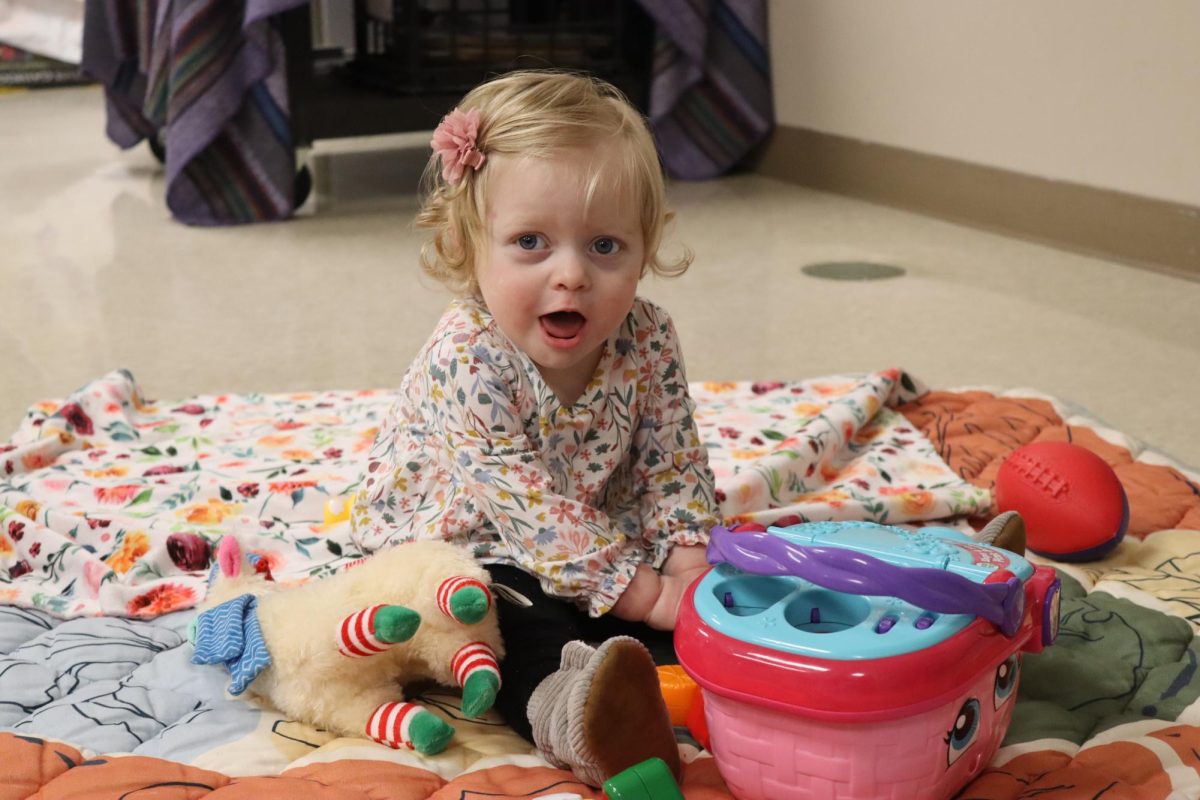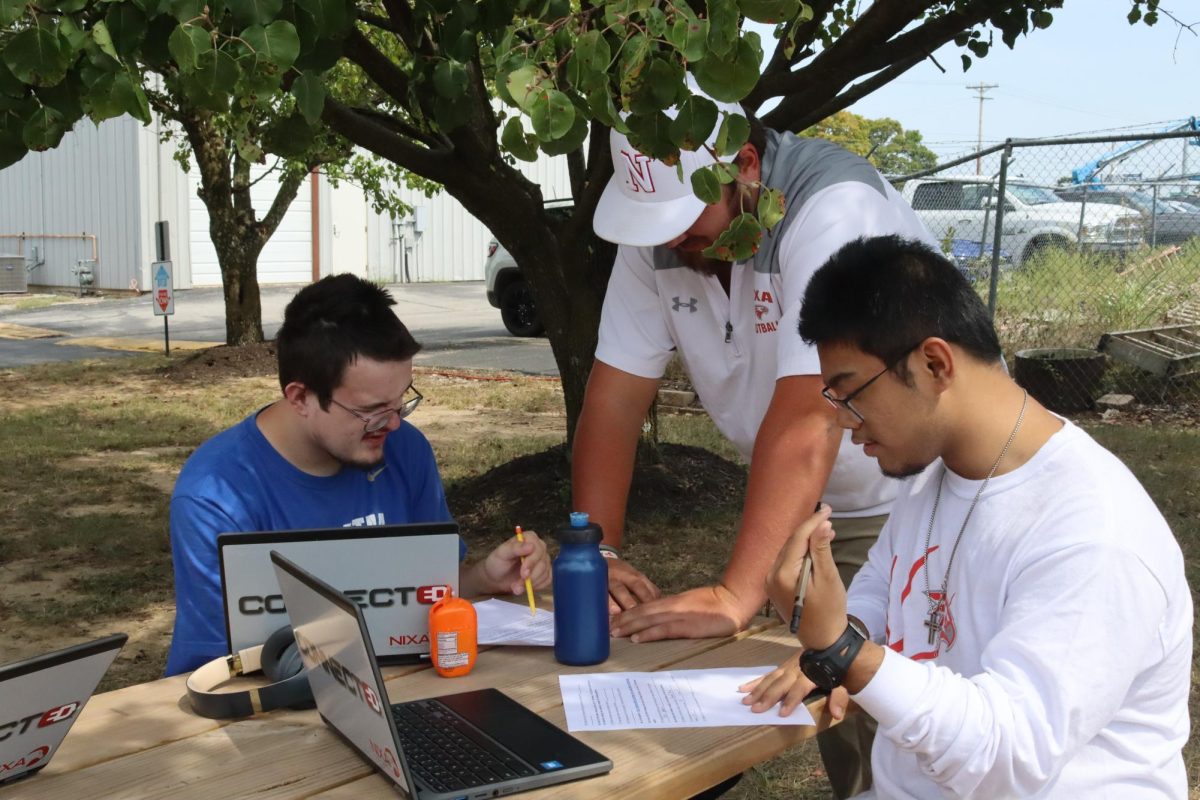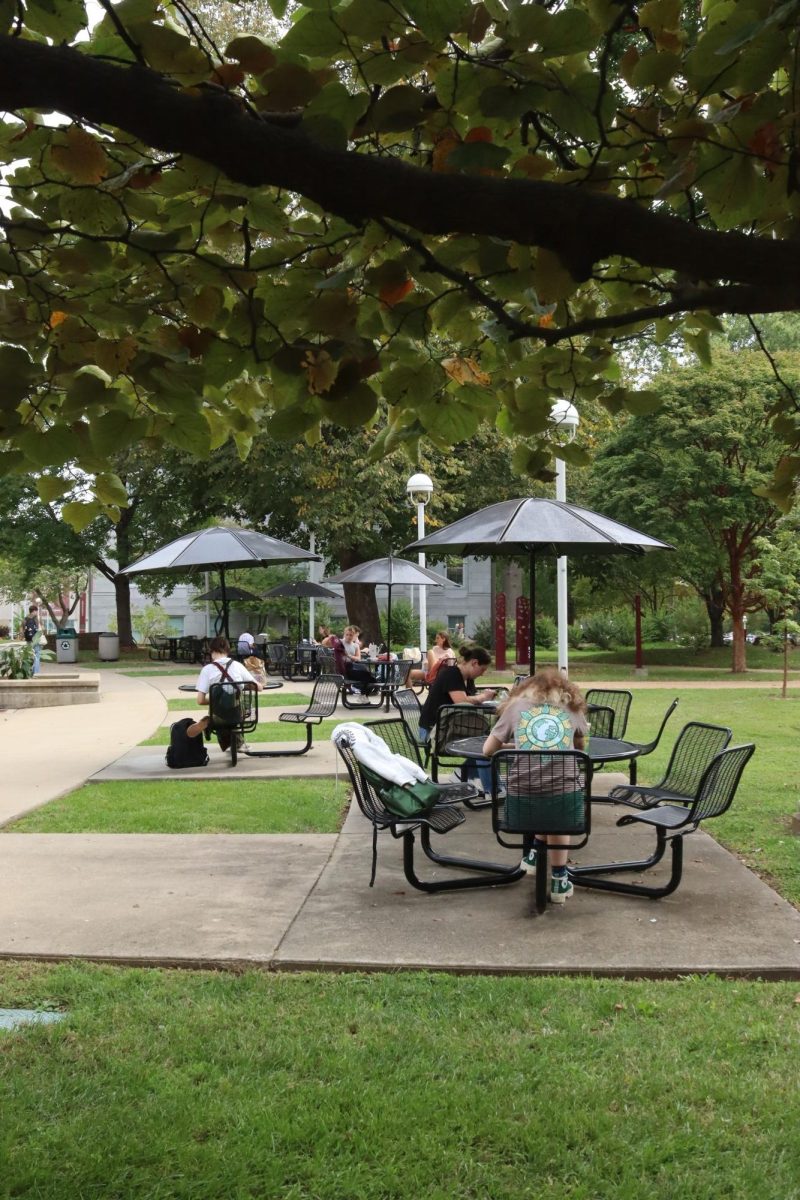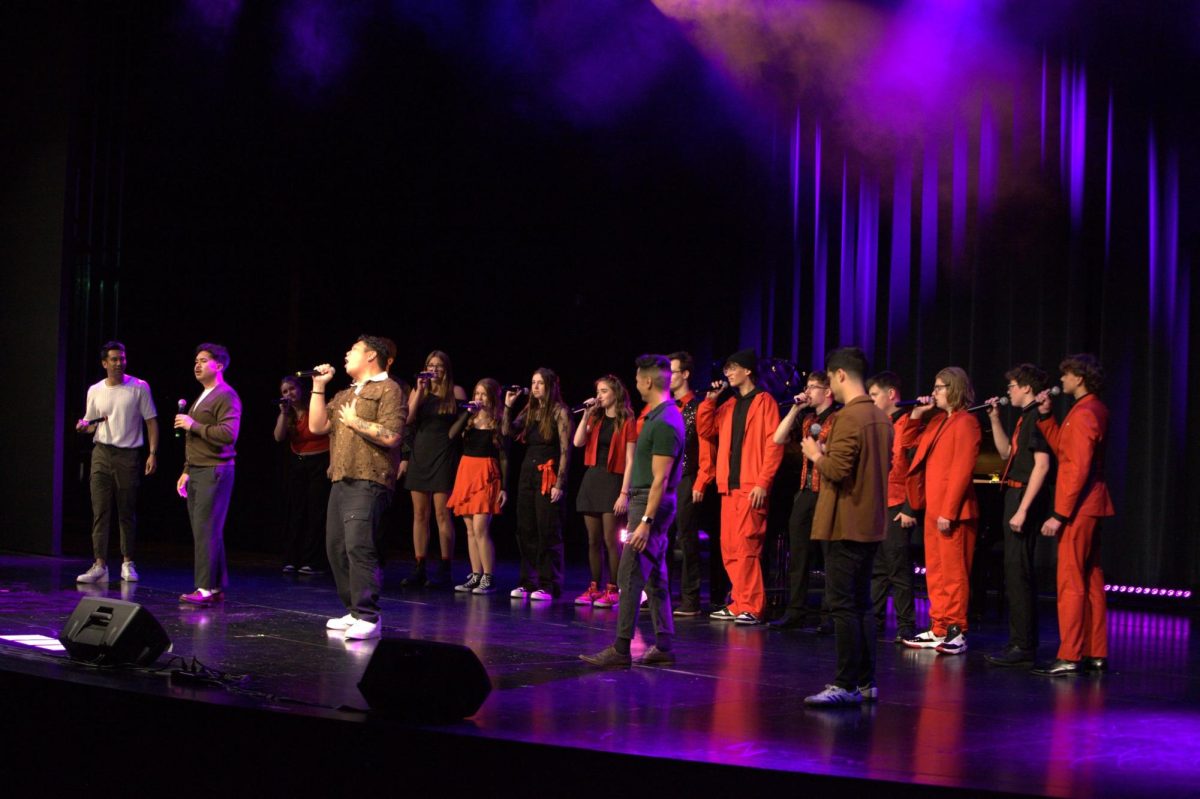February 15th is a day to acknowledge a rare genetic disease. Angelman Syndrome is a genetic disease that affects only about one in 20,000 children. Behind the smiles, Angelman Syndrome can lead to seizures, stunted growth and little to no speech.
Ashley Dense, a Nixa High School Spanish teacher, has a daughter who was diagnosed with Angelman Syndrome last December. Dense expressed concerns over 16-month-old Isabella’s health when she was about 6 months old.
“We had been doing physical therapy to help her progress with her milestones, learn how to sit up, crawl and all of those basic things,” Dense said. “She just wasn’t really quite going at the pace you would expect.”
Dense observed some tendencies of Isabella’s that were alarming to her. Isabella struggles to keep up with other kids her age when it comes to physical activities like walking and crawling.
“She was taking a longer time to meet her milestones. She just wasn’t really quite going at the pace you would expect. She was very wiggly- just different things that her pediatrician thought were unusual,” Dense said. “So he sent us to a neurologist to get their opinion and they thought we should do genetic testing.”
Taking a sample of the parental DNA is used to try and locate where this genetic change may have come from. Once Dense and her husband got the DNA testing results back, they received the diagnosis.
“We’ll always be here to take care of her — and when you get a diagnosis like this it kind of feels like you’ve been hit by a train,” Dense said. “But you just take it in stride and as you figure things out it does get a little bit easier. The way I’m looking at it is to just adjust to a new version of life.”
There are lots of common side effects of Angelman Syndrome. They vary in seriousness, from having life-threatening seizures to having a super bubbly personality, full of smiles.
“Eventually about 85 percent of kids end up having seizures and that can really vary a lot depending on the severity of it,” Dense said. “ That doesn’t mean it’s seizures where you fall on the ground and start shaking. There’s some called absence seizures where they just space out.”
Other possible side effects include being nonverbal, but that does not stop people who are nonverbal.
“She probably won’t ever talk; she’ll be nonverbal most likely,” Dense said. “I’ve heard that kids with Angelman Syndrome have very good perceptive communication so it’s not that she won’t necessarily understand what we’re saying but she’ll find other ways to communicate.”
There are tools to help people who can’t verbally communicate. An Augmentative and Alternative Communication device, or an AAC device is extremely useful in these cases.
“A lot of kids will communicate on what’s called an AAC device so it’s basically like a tablet. And they learn how to use those. Some of them, depending on their intellectual abilities, might learn how to do some signs and things like that.”
These circumstances may have setbacks but advocates remind the public that it is important to always be kind and inclusive to everyone, no matter the challenges they may face.
“Kindness and inclusion make a huge difference in the world. Individuals with disabilities such as Angelman Syndrome have just as much… to say and do as a neurotypical person, but [they] communicate it in a different and unique way,” Dense said. “Their smiles and laughter bring so much joy to anyone they meet, so take the time to show patience, understanding, and inclusion to those who communicate and move differently.”
Support the Angelman Syndrome Foundation here: https://support.angelman.org/team/635412














Cynthia McKinney • Feb 17, 2025 at 11:54 pm
Beautiful!!